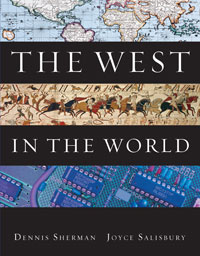
The West in the World, 4th Edition (Sherman)Chapter 26: Into the Twenty-First CenturyChapter SummariesThe speed with which communism collapsed caught the world by surprise. Throughout Eastern Europe, communist regimes fell in 1989, and by 1991, the Soviet Union itself fragmented into individual nation states. But the transition to liberal democratic governments and market economies would prove to be more difficult than anyone had expected. The destructive power wielded by newly unleashed nationalism in the former Yugoslavia was especially disruptive. Although one military superpower remained, the movement toward European economic integration and the economic strength of the Pacific Rim produced three regional power centers—in Europe, North America, and East Asia. But not only economies became global; culture was shared to a greater extent than ever before by the Western and non-Western worlds, made possible by technologies that shrank distances and differences. Environmental and health problems, however, were also shared. At the end of the twentieth century, the very place of Western civilization in relation to the rest of the world appeared to be changing. |  |















